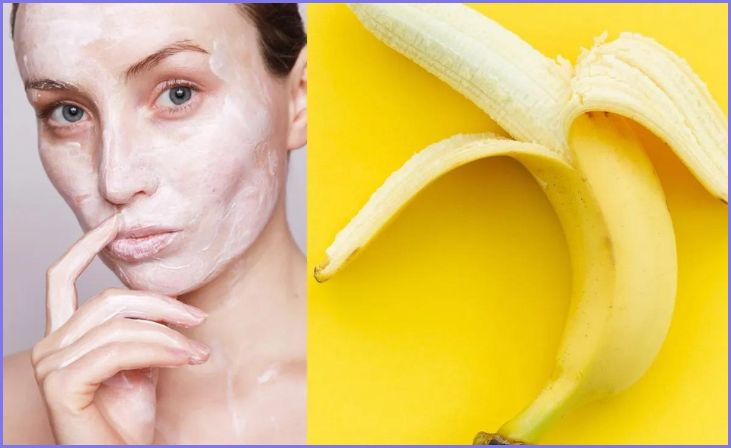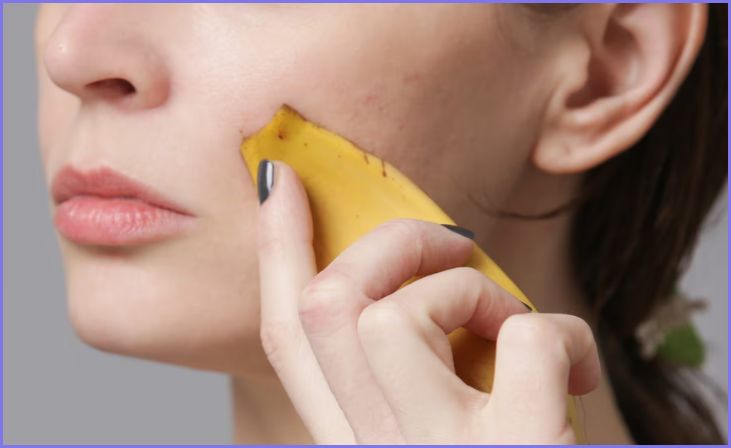Discover the transformative potential of a common kitchen item in “The Power of the Banana Peel: 5 Surprising Uses.” Beyond its role as a snack, the banana peel proves to be a versatile powerhouse, offering unexpected benefits. From natural cleaning solutions to enhancing plant growth, this blog explores five unique and surprising applications for banana peels that showcase the untapped potential of this often-overlooked resource.
Join the journey of discovery as we delve into creative and sustainable ways to harness the power of banana peels, turning ordinary kitchen waste into extraordinary solutions. Explore the secrets within the peel and unveil the eco-friendly, budget-friendly, and surprisingly effective uses that can add a touch of magic to your daily life.
Uses of Banana Peel
Homemade bug repellent

Inhabitat provides an easy DIY bug trap using a plastic bucket with a lid and a used banana peel. Bugs are attracted to the sweet scent of the peel, flying into the trap through punctured holes.
Did you know that banana peels can be used as a natural bug repellent? The oils and compounds found in the peel, such as limonene, can help keep pesky insects at bay. Simply rub the inside of a banana peel on your skin to deter mosquitoes, flies, and other insects.
Not only is this method effective, but it’s also chemical-free and gentle on the skin, making it a great alternative to commercial bug repellents. So, the next time you’re enjoying a banana, save the peel and harness its power to ward off those bothersome bugs.
For More- How to Get Rid of Acne Scars?
Perfect for gardening
Banana peels produce methane gas, 84 times more intense than carbon dioxide. They can be used for composting or gardening by wrapping them around plants or creating a solution for indoor plants.
Banana peels can be a fantastic addition to your gardening routine. They are a rich source of nutrients, including potassium, phosphorus, and calcium, which are beneficial for plant growth. One popular use is to bury small pieces of banana peel around plants, particularly in vegetable gardens.
As the peel decomposes, it releases these nutrients into the soil, providing a natural and slow-release fertilizer for your plants. Additionally, banana peels can help deter pests like aphids and snails, so you can enjoy a thriving garden without relying on harmful chemicals.
Splinter removal
To remove a splinter painlessly, apply a banana peel to the area for 30 minutes, which contains enzymes that help bring the splinter to the surface for easy removal with tweezers, according to Bright Side.
Dealing with a stubborn splinter can be frustrating, but a banana peel might just be the solution you need. The enzymes and moisture in the peel can help soften the skin and draw out the splinter naturally. Simply cut a small piece of banana peel and place it over the splinter, securing it with a bandage or tape.
Leave it overnight or for a few hours to allow the peel’s enzymes to work their magic. The moisture from the peel will soften the skin, making it easier to remove the splinter painlessly. It’s a simple and effective method that can save you from the discomfort of digging out splinters with needles or tweezers.
Cook with peels

When cooking meat or fish, adding a banana peel to the roasting pan can make it more tender by keeping it moist, acting as a “blanket” that retains moisture, according to Bright Side.
Don’t let those banana peels go to waste in the kitchen! They can be surprisingly versatile and flavorful when used in cooking. In some cuisines, banana peels are used as an ingredient in various dishes. You can sauté or stir-fry the peels, add them to curries, or even use them in baking.
The peels provide a slightly tangy and savory taste that can add a unique twist to your meals. Experiment with different recipes and explore the culinary potential of banana peels to create delicious and sustainable dishes.
Reduce acne and scars

Bright Side suggests rubbing the fleshy part of a banana peel on the face for 10 minutes to reduce acne and scars, making it a potential addition to daily skincare routine.
If you’re looking for a natural remedy to help reduce acne and scars, look no further than the humble banana peel. The antioxidants and anti-inflammatory properties in the peel can help soothe irritated skin and promote healing. Rub the inside of a banana peel gently on clean skin, focusing on areas affected by acne or scars.
Leave it on for a few minutes or overnight, then rinse off with warm water. Regular use of banana peels can help reduce redness, inflammation, and the appearance of acne scars over time. Embrace the power of banana peels as a natural skincare solution and unveil smoother, clearer skin.
Also Read- How to clean makeup brushes?
Conclusion
In conclusion, the banana peel, often dismissed as kitchen waste, emerges as an unsung hero with versatile applications. From enhancing plant growth to serving as a natural cleaning agent, these five surprising uses showcase the remarkable potential within this overlooked component. Embracing these eco-friendly practices not only reduces waste but also introduces cost-effective and creative solutions into daily life.
The banana peel, once destined for the trash, proves to be a valuable resource, offering a touch of magic to skincare routines, gardening endeavors, and household tasks. As we reevaluate our approach to everyday items, let the banana peel stand as a symbol of ingenuity, inspiring a more sustainable and resourceful lifestyle. Explore the unexpected and unlock the power within this simple yet extraordinary fruit peel for a greener, more imaginative existence.
FAQs
Yes, banana peels have moisturizing properties. Rub the inner peel on your skin for a natural glow.
The peels’ natural oils make them effective for polishing and cleaning surfaces. Rub them on items like shoes or silverware.
Absolutely. Banana peels are rich in nutrients like potassium and can be composted or used directly as a fertilizer for plants.







